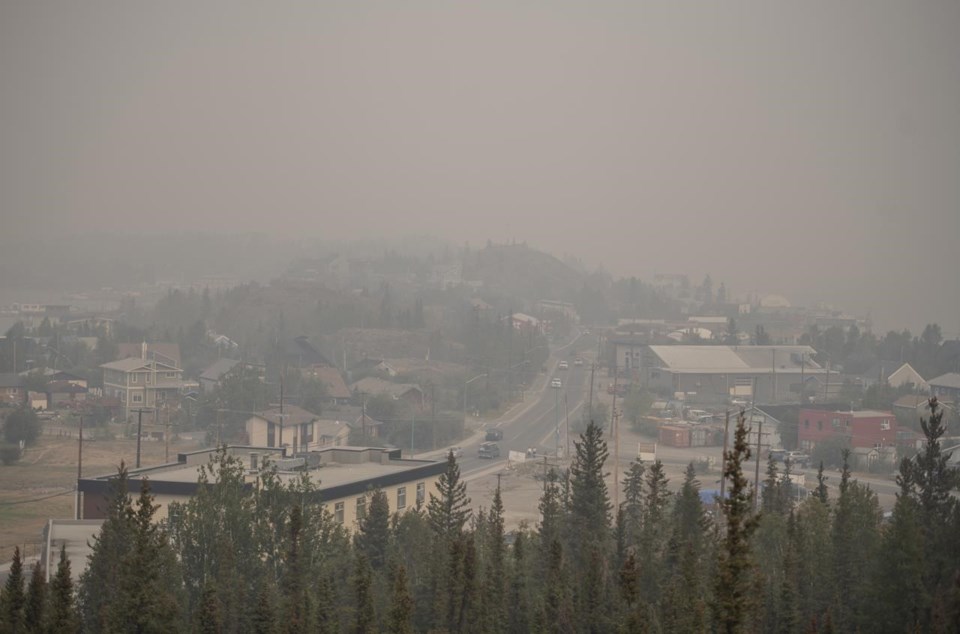FORT SMITH, NWT — Firefighters will be watching the skies over the next couple of days hoping for help from Mother Nature as wildfires along the Alberta-Northwest Territories boundary continue to force evacuations.
Thousands of N.W.T. residents have fled the 236 wildfires tearing through the northern boreal forest. More than 20,000 square kilometres have burned, an area almost four times the size of Prince Edward Island.Â
Evacuations have been ordered for Fort Smith, Enterprise, Jean Marie River and Hay River.Â
Many highways have been closed by the fires and the territory is mounting what officials have called the largest airlift in its history. Canadian Forces personnel are helping firefighters and flying evacuees out on Hercules aircraft.Â
In addition to the military deployment, the federal government said in a statement it is providing funding dedicated to response and recovery activities for eligible First Nations, while Public Services and Procurement Canada and the Canadian Coast Guard are also lending support.Â
Late Tuesday, incident commander Gregg Walker said the fire near Fort Smith had moved to within four kilometres of the community, where 93 firefighters and six helicopters remain to fight the blaze.
"Two days ago, it spread quite a long ways from the west to the east directly towards Highway 5 and the town of Fort Smith," Walker said.
He wouldn't speculate on whether the situation will get worse in the coming days and said it depends on the weather. Walker said a little rain did help.
"We had a couple of millimetres of rain over parts of the fire and probably not all of it and that's enough to give us a little bit of a break for a day or so but not longer than that," he said.
"We'd need 20 millimetres of rain or something more along those lines in order to get a week or 10 days' reprieve."
Walker said if hot, dry fire conditions return, the focus will be on containing the spread, but rainfall would allow heavy equipment and crews to suppress the parts of the fire closest to the communities.
The blaze currently bearing down on the Fort Smith area was one of 15 caused by lightning strikes back in May.
Walker said this fire was the furthest away from Fort Smith and resources were concentrated on those closer to the town.
"We suppressed a number of fires that were quite a bit closer to Fort Smith with the resource teams, meaning the firefighters and the helicopters that were on hand at the time," he said.
Walker said other available resources were loaned out to help fight wildfires in other jurisdictions.
"All of the fire resources were occupied in fires in some place or another in this country so there was no extra resourcing to bring in to pay attention to this fire," Walker said.
"The availability of resources and the weather has allowed this fire to spread to the proximity to which it is."
Some residents of the territorial capital Yellowknife have been told to be ready to leave on short notice. An evacuation alert was issued on Tuesday for some parts of the city, including Kam Lake Business District, Grace Lake and Engle Business District. A local state of emergency was declared on Monday.Â
An evacuation notice remains in place for Inuvik at the far northwestern tip of the N.W.T. Â
This report by The Canadian Press was first published Aug. 16, 2023.
The Canadian Press




